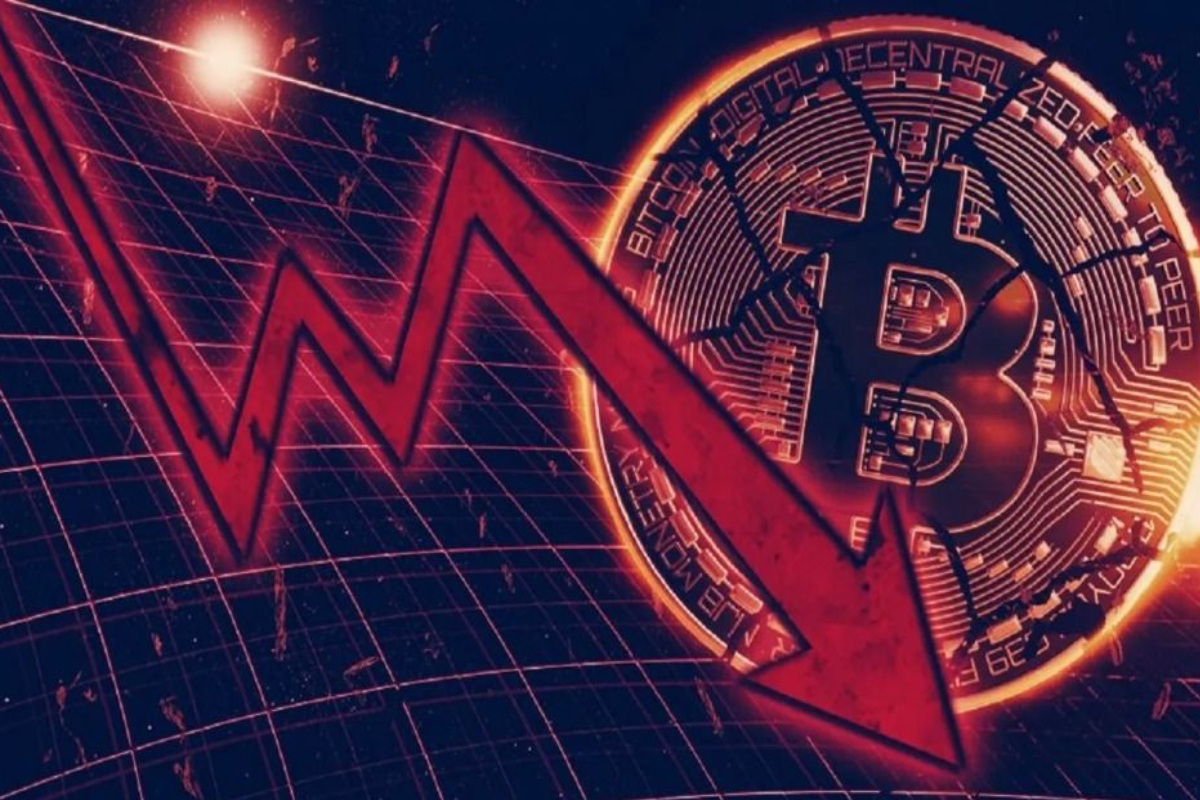The October 2025 crypto market crash has shaken investors across the world. From Bitcoin and Ethereum to smaller altcoins, almost every digital asset saw a sharp fall in value. Many traders lost billions in a matter of hours, leaving people wondering what really caused this sudden crypto crash. In this article, let’s break down the top reasons behind the latest crypto market crash in simple terms.
U.S.–China Trade War Escalation
One of the biggest reasons behind the latest crypto market crash was the renewed tension between the United States and China. President Donald Trump announced a possible 100% tariff on all Chinese imports, which immediately sparked panic in global financial markets. In response, investors sold off risky assets like cryptocurrencies and moved toward safer investments such as gold and U.S. Treasury bonds. Since China also plays a huge role in producing Bitcoin mining hardware and rare-earth materials used in tech, this trade dispute caused serious supply chain concerns that hit the crypto world hard.

Hidden Leverage and Massive Liquidations
Before the crash, the crypto market was overheated with extreme leverage. Many traders were borrowing large amounts of money to take big positions in Bitcoin, Ethereum, and other coins. When the panic selling began, over $19 billion worth of leveraged positions were liquidated within hours, triggering one of the largest wipeouts in crypto history. This chain reaction made prices fall even faster, and coins like Solana and XRP dropped more than 40% in a day. The crash was not just a reaction to news—it was the result of an already risky market finally bursting.
Credit Concerns and Banking Stress
Another key factor was fear around U.S. regional banks and their exposure to bad loans. Reports revealed that several banks were facing credit issues, making investors nervous about possible financial instability. As a result, they pulled out of speculative markets like crypto. This banking stress added more pressure on Bitcoin and Ethereum prices just as global uncertainty was peaking.
ETF Outflows and Market Sentiment Shift
Exchange-traded funds (ETFs) that hold Bitcoin saw large outflows in the days leading up to the crash. As institutional investors began withdrawing funds, confidence in the market started to drop. Sentiments quickly shifted from “risk-on” to “safe-haven” mode, meaning traders preferred stability over profits. Selling pressure increased across almost every exchange, causing even the strongest coins to tumble.

Global Conflicts and Political Uncertainty
The broader global situation in 2025 has also been unstable. Conflicts such as those between Russia and Ukraine and Israel and Hamas have created uncertainty for global investors. Combined with the ongoing U.S. government shutdown, which has stretched over two weeks, investor confidence in financial markets weakened further. When people lose trust in economic stability, even assets like crypto—which are supposed to be decentralized and independent—tend to suffer.
Lack of Liquidity and Market Depth
Unlike traditional stock markets that have safety measures like circuit breakers, the crypto market operates 24/7 without pause. When panic selling started, liquidity vanished quickly. Major exchanges saw an 80% drop in market depth, meaning there weren’t enough buyers to support falling prices. This liquidity crunch caused extreme price fluctuations—some tokens briefly lost almost all their value before stabilizing again.
The Bigger Picture: A Wake-up Call
While this crash was painful, it also served as a reminder of how fast the crypto world can change. Experts believe the October 2025 event might strengthen the market in the long run by forcing overleveraged traders out and encouraging more sustainable growth. Crashes like these highlight the importance of managing risk and avoiding emotional decisions in volatile markets.
What Investors Should Learn
The latest crypto market crash wasn’t caused by a single event—it was a combination of trade tensions, excessive leverage, bank credit fears, and investor panic. While prices have started to recover slowly, it’s clear that the market needs greater stability and regulation. Investors should treat this crash as a lesson in risk management and not rely entirely on hype or short-term gains.

